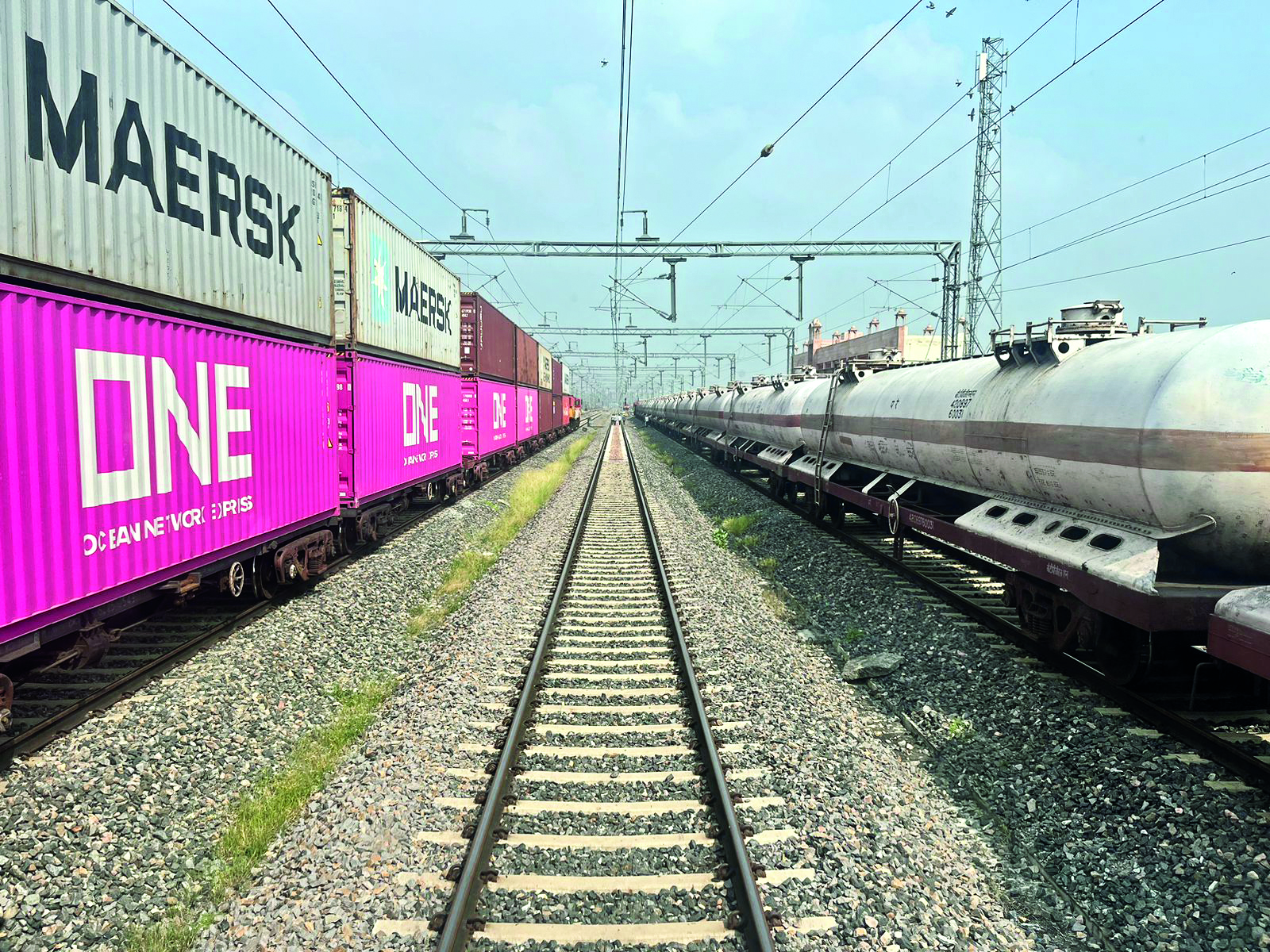DFC paves way for efficient freight transport & economic growth

JAIPUR: The Dedicated Freight Corridor (DFC), an initiative aimed at reducing logistics costs and enhancing the efficiency of India’s transport network, is now showing remarkable progress. Freight trains are currently running every 12 minutes along the 2,843 km long corridor, and by next year, this number is set to increase to 480 trains per day, demonstrating the transformative potential of the DFC.
This development aligns with the Government of India’s ambitious plan to bring logistics costs down to single digits, a major step toward bolstering the nation’s competitiveness in global trade. During a recent journey along the Western Corridor of the DFC, media representatives were briefed on the project’s status. Chitresh Joshi, Deputy General Manager (Corporate Communication) of DFC, stated that 97 per cent of the Eastern and Western Corridors have been completed, with 350 freight trains already operating daily on the network.
Of the entire 2,843 km DFC route, 2,741 km of track has been completed, leaving only 103 km between Mumbai and Baitarna under construction. This remaining section is expected to be finished by next year, allowing the DFC to operate at its full capacity of 480 freight trains daily. Once fully functional, the corridor will handle around 20 per cent of Indian Railways’ freight traffic, a significant jump from the current 10 percent.
A key feature of the DFC is the ability for freight trains to travel uninterrupted, leading to faster delivery times and optimised resource usage. The corridor’s effectiveness will further improve once it connects to major ports, such as the Jawaharlal Nehru Port Trust (JNPT), facilitating seamless routes for international trade.
The DFC is poised to be a game changer in sectors requiring the movement of large volumes of goods, including double-stack container transport, milk tankers, e-commerce shipments, and perishable items. The increased speed and extended range of freight movement will lead to significant time and cost savings for businesses and consumers alike.
India’s current logistics costs stand at 13–14 percent of GDP, significantly higher than countries like the US and China, where costs hover around 8–9 per cent. With the full implementation of the DFC, these costs are expected to drop substantially, improving India’s competitive edge in global markets.
Lower logistics costs will not only benefit businesses but will also bring down the cost of goods for consumers, ensuring timely and affordable delivery of products.
The DFC runs through important industrial regions such as Uttar Pradesh, Bihar, Haryana, Rajasthan, Maharashtra, and Gujarat. These states stand to gain from faster and more cost-effective transportation, leading to improved productivity and growth in industrial activity. The positive impact of the DFC will extend nationwide, streamlining supply chains across India.
One of the notable benefits of the DFC is its ability to ease the burden on Indian Railways’ existing passenger lines. Over 15 per cent of the current rail network has been freed up by diverting freight traffic to the DFC.
This will allow for more passenger trains and an improved timetable, enhancing the overall travel experience. The improvement in passenger services is expected to boost Indian Railways’ revenue as well.



